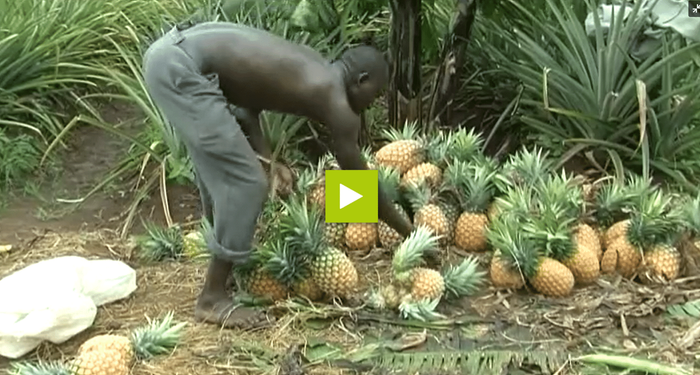Without good management, pineapple yield drop greatly after the second harvest. In this video we look at how to keep fields productive for at least 6 years.
Pineapples grow best in well drained soils rich in organic matter. The organic matter can be from coffee husks and poultry manure. Coffee husks release nutrients slower but longer than poultry manure. After addition of manure, earth up, but don‘t use poultry manure when production is for organic market. You can intercrop with legumes, because they add soil fertility, provide food, suppress weeds and acts as a source of income before pineapple harvest. After harvest, use crop residues as mulch and when renting land, establish land tenure contracts.
Best way of intercropping
Grow pineapples across the slope in double rows at a 30-50 cm space in between , leave 1-1.5m between the double rows and grow legume crops in the wider space.
After 3 months, apply manure, compost or coffee husks in between the pineapples. Earth up and provide some shade by growing bananas or leguminous trees at a wider spacing which also add nitrogen to the soil. Prune all shade plants regularly to avoid too much shade.



















